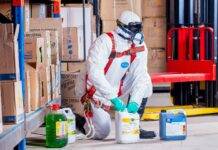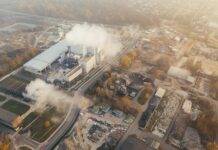
Chemical Exposure Monitoring: Air Sampling and Analysis
Introduction
Chemical exposure monitoring is a crucial aspect of ensuring a safe and healthy working environment in industries where employees may come into contact with hazardous substances. Air sampling and analysis are fundamental components of this monitoring process, providing valuable insights into the levels of airborne contaminants. This article delves into the significance of chemical exposure monitoring, focusing on the methodology of air sampling and analysis.
Understanding Chemical Exposure Monitoring
- Importance of Monitoring
- Worker Safety: Chemical exposure monitoring aims to protect workers from the adverse effects of hazardous substances.
- Regulatory Compliance: Adhering to monitoring requirements ensures compliance with safety regulations and standards.
- Types of Chemical Hazards
- Gases and Vapors: Airborne chemicals may include gases and vapors emitted during industrial processes.
- Dust and Particulates: Solid particles or dust from various materials can become airborne and pose inhalation risks.
- Long-Term and Short-Term Exposure
- Chronic Health Effects: Long-term exposure to certain chemicals may lead to chronic health conditions.
- Acute Effects: Short-term exposure can cause immediate health effects, requiring prompt intervention.
Air Sampling Methodology
- Identification of Hazardous Substances
- Chemical Inventory: Maintain a comprehensive inventory of chemicals used in the workplace.
- MSDS/SDS Review: Refer to Material Safety Data Sheets (MSDS) or Safety Data Sheets (SDS) for information on chemical properties.
- Selection of Sampling Locations
- Work Area Monitoring: Identify specific work areas where exposure is likely to occur.
- Breathing Zone: Place sampling equipment in the breathing zone of workers for accurate representation.
- Duration and Frequency of Sampling
- Continuous Monitoring: Some situations may require continuous monitoring for real-time data.
- Periodic Sampling: Conduct periodic sampling to assess exposure levels over time.
- Sampling Instruments
- Passive Samplers: These samplers absorb chemicals over time for subsequent analysis.
- Active Samplers: Devices actively draw in air, capturing contaminants for analysis.
Air Analysis Techniques
- Laboratory Analysis
- Sample Collection: Transport collected samples to a certified laboratory for analysis.
- Instrumentation: Laboratories use specialized instruments like gas chromatographs and mass spectrometers.
- Real-Time Monitoring
- Direct-Reading Instruments: Employ real-time monitors that provide immediate data on airborne concentrations.
- Infrared Spectroscopy: Infrared analyzers can detect specific gases directly.
- Interpretation of Results
- Comparison with Standards: Compare analysis results with permissible exposure limits (PELs) or threshold limit values (TLVs).
- Risk Assessment: Evaluate the risk posed by the observed exposure levels and take corrective actions if necessary.
- Documentation and Record-Keeping
- Detailed Records: Maintain detailed records of air sampling results, including dates, locations, and chemical concentrations.
- Regulatory Compliance: Documentation supports regulatory compliance and facilitates trend analysis.
Ensuring Worker Safety
- Implementing Control Measures
- Engineering Controls: Install engineering controls like ventilation systems to reduce airborne concentrations.
- Personal Protective Equipment (PPE): Provide suitable PPE based on monitoring results.
- Training and Awareness
- Worker Education: Educate workers on the risks associated with chemical exposure and the importance of safety measures.
- Emergency Response: Ensure workers are trained in emergency response procedures in case of accidental exposure.
- Regular Review and Updates
- Periodic Assessment: Regularly assess and update exposure monitoring programs based on changes in processes or chemicals used.
- Feedback Mechanism: Encourage feedback from workers to improve the effectiveness of control measures.
Conclusion
Chemical exposure monitoring through air sampling and analysis is a proactive approach to safeguarding the health and well-being of workers. By implementing robust monitoring programs, selecting appropriate sampling methodologies, and utilizing advanced analytical techniques, employers can identify and mitigate potential risks. The continuous commitment to worker safety, coupled with adherence to regulatory standards, creates a workplace environment where chemical exposure is effectively managed.
Safety Data Analytics: Leveraging Big Data for Proactive Risk Management
Chemical Safety Engineering: Hazard Identification and Risk Assessment
Frequently Asked Questions (FAQs)
- Why is chemical exposure monitoring important in the workplace?
- Chemical exposure monitoring is essential for protecting workers from the adverse effects of hazardous substances, ensuring regulatory compliance, and maintaining a safe and healthy working environment.
- What are the types of chemical hazards that may require monitoring?
- Chemical hazards include gases, vapors, dust, and particulates that may pose inhalation risks. Monitoring is essential for both long-term and short-term exposure to these substances.
- How is air sampling conducted for chemical exposure monitoring?
- Air sampling involves the identification of hazardous substances, selection of sampling locations, determination of sampling duration and frequency, and the use of appropriate sampling instruments such as passive or active samplers.
- What techniques are used for the analysis of air samples?
- Air samples can be analyzed in certified laboratories using instrumentation like gas chromatographs and mass spectrometers. Real-time monitoring instruments, such as infrared analyzers, provide immediate data on airborne concentrations.
- How can the results of air sampling be interpreted and used to ensure worker safety?
- Results are compared with permissible exposure limits (PELs) or threshold limit values (TLVs). Based on the interpretation, control measures, such as engineering controls and personal protective equipment, are implemented to ensure worker safety.
























